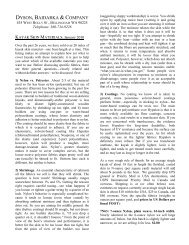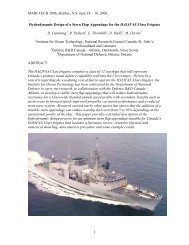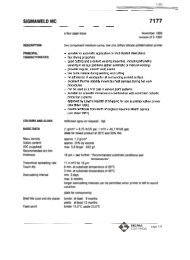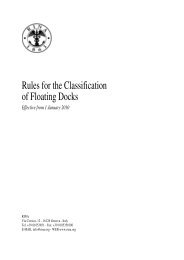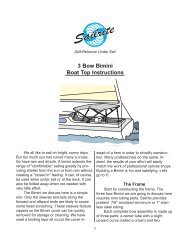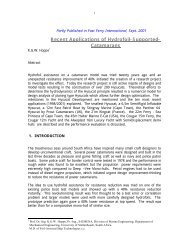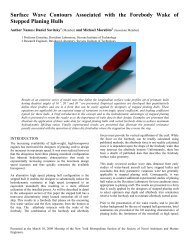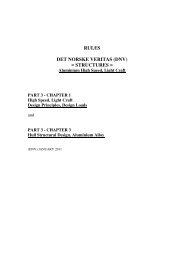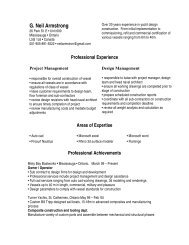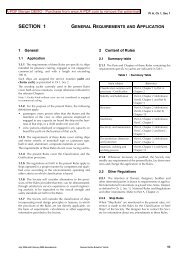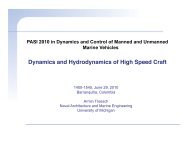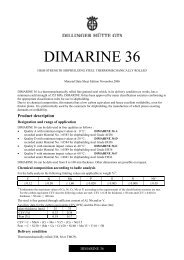CD03 - Issue #74: Designer / Builder Paul Bieker--Process Control ...
CD03 - Issue #74: Designer / Builder Paul Bieker--Process Control ...
CD03 - Issue #74: Designer / Builder Paul Bieker--Process Control ...
You also want an ePaper? Increase the reach of your titles
YUMPU automatically turns print PDFs into web optimized ePapers that Google loves.
Acutely aware of thebenefits—andlimitations—of finiteelement analysis,<strong>Bieker</strong> makes extensiveuse of FEA in hisdesign and engineering.Here we see a color"map" of panelstresses.mainsail, hut not so much as to loosenthe headstay. "It seems a good rig," heconcludes. "The top boats in the lastWorlds used that rig."By capitalizing on his experiencedesigning large commercial vessels,as well as designing and building 14s,<strong>Paul</strong> <strong>Bieker</strong> has developed a balancedapproach to hull engineering that ishoned by computer-aided design andfinite element analysis. "One of thethemes in yacht design for the nextdecade," he says, "will he that you'rereally going to have to apply technicaltools and numerical data. You're notgoing to be able to get by with guessworkfor most boats. For designing foilsI bought a Hanley Innovations programthat compares tabular research publishedby Abbott and Doenhoff, andcorrelates pretty well with reality. Youcan change any Reynolds number,thickness, and camber, put a trim tab onit, trip the flow if you think you aregetting laminar, and really analyze thefoil—all for about 250 bucks,"When engineering determinate structuresfor which the load and load pathsare well known, <strong>Bieker</strong> says that "FEA isgoing to show you stresses pretty closeto those you arrived at from hand calculations.In indeterminate structures,though, there are multiple load paths.Without FEA, you really can't properlyanalyze complex geometries. A lot hasto do with the relative stiffness of structures.If you have a stiff floor next toone more flexible, then you don't knowfor sure what percentage of load isgoing through each one, but the stiffone is going to be taking the bulk ofthe load. What will kill you are geometriesthat concentrate stress in spotsmore than you would expect fromhand calculations; FEA helps make sureyou don't put the carbon in thewrong place—or point it in the wrongdirection."Even FEA remains highly dependenton judgment, <strong>Bieker</strong> admits. "You canlearn much about complex structuresfrom FEA, but the art lies in determiningyour load criteria, especially withoutinstrumentation. Waves, for example,are difficult to handle. For America'sCup boats you measure a lot, and setcriteria for what loads and deflectionsare likely to cause you trouble. But youcan't truly model reality; you're simplifyingit." He adds that FEA works well formetal structures because welding producesjoints that are homogenous withsurrounding plates. "But laminated skinsare not analogous to welded joints. FEAbased on 2-D shells assumes that skins74 PROFESSIONAL BOATBUILDER



